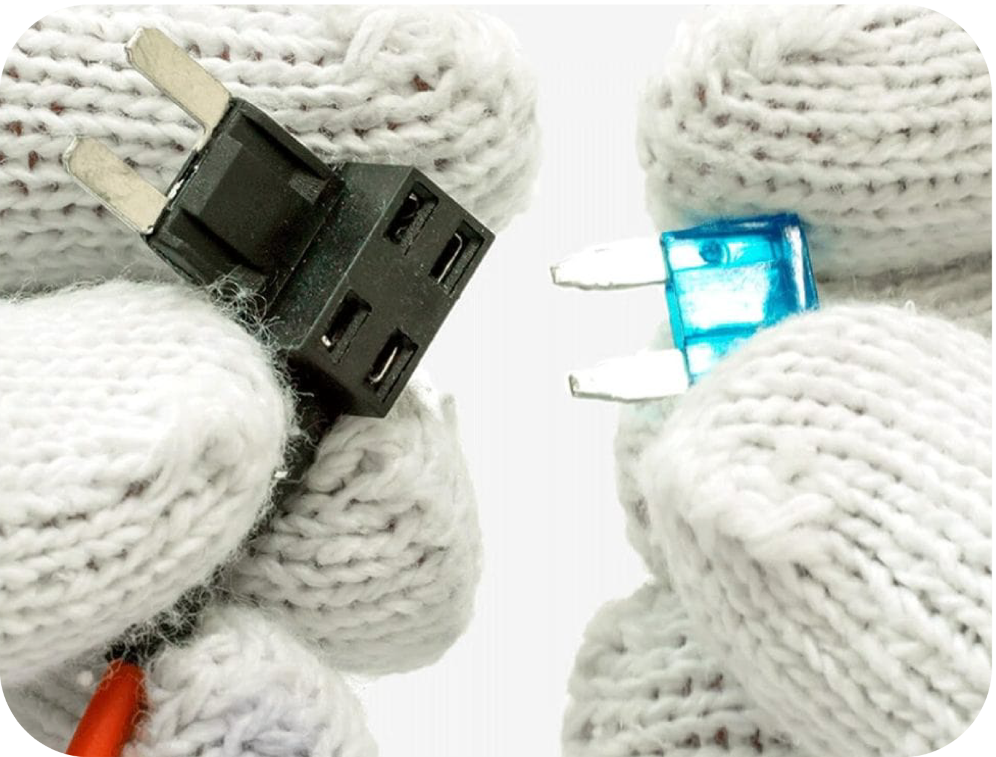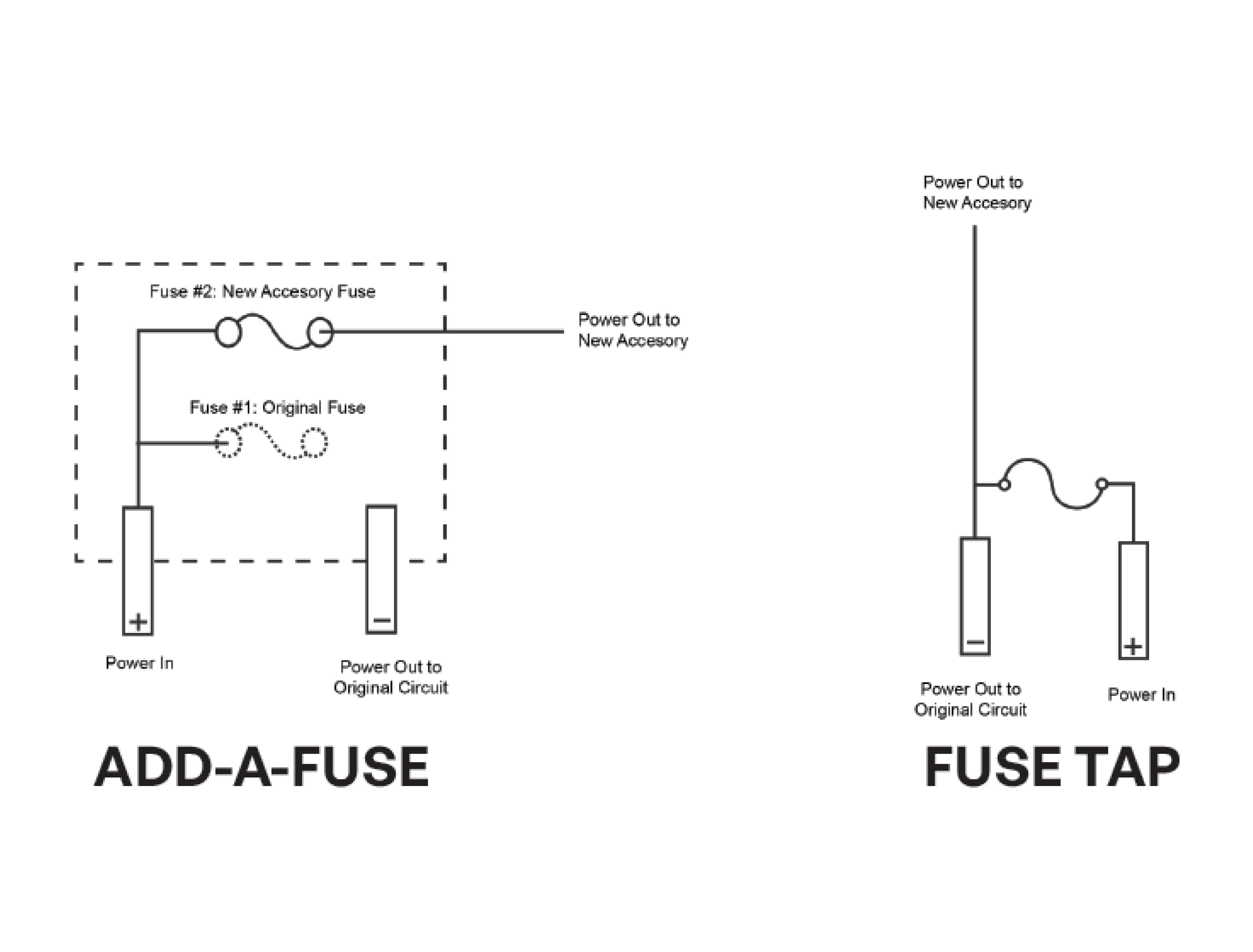Add-A-Fuse & Fuse Taps: Adding a New Circuit

If you’re short on space in your fuse blocks but have additional accessories to protect, our lightweight Add-A-Fuses and Fuse Taps let you install one or two added circuits to a vehicle’s electrical system without the need for bulkier blocks and holders. The best part: no cutting or splicing necessary. Both products come with built-in butt splice connectors for easy wiring when adding additional accessories.
Add-A-Fuse
Without disrupting existing circuits but simply adding on to them, Add-A-Fuses turn one fuse slot of your fuse block into 2-3 slots to protect additional accessories. You gain more circuits, and both the new and existing circuits are fully protected by separate fuses.
Add-A-Fuses are available for our MICRO3, MICRO2, Low-Profile Mini, Mini and Regular (ATO/ATC) blade style fuses. Some models have left hand exits and others offer three slots for two additional circuits. All models have a max combined current for all circuits of 30A or 40A, depending on the part. Each come standard with a 16AWG wire.

Fuse Tap
Instead of creating an entirely separate circuit for a second fuse, Fuse Taps allow you to add an additional device using one fuse to protect two circuits. This is not always advised, because if the tapped fuse opens, both devices will be cut off from power until the Fuse Tap is replaced.
Fuse Taps are available for our MICRO2, Low-Profile Mini, Mini and Regular (ATO/ATC) blade style fuses They come in three amperages — 10A, 15A, and 20A — and the output is determined by the wire gauge – 10A for 16AWG and 5A for 18WG, regardless of the actual fuse amperage.
To help you select the right rating for your specific application, see our Fuse Selection Guide for complete context.

(Mini Style – Low Profile)
10A
10A
ANS-W-10A-18R
(Mini Style – Low Profile)
10A
5A
ANS-W-15A-16R
(Mini Style – Low Profile)
15A
10A
ANS-W-15A-18R
(Mini Style – Low Profile)
15A
5A
ANS-W-20A-16R
(Mini Style – Low Profile)
20A
10A
ANS-W-20A-18R
(Mini Style – Low Profile)
20A
5A
(Mini Style)
10A
10A
ANM-W-10A-18R
(Mini Style)
10A
5A
ANM-W-15A-16R
(Mini Style)
15A
10A
ANM-W-15A-18R
(Mini Style)
15A
5A
ANM-W-20A-16R
(Mini Style)
20A
10A
ANM-W-20A-18R
(Mini Style)
20A
5A
(Regular (ATO/ATC Style)
10A
10A
ANR-W-10A-18R
(Regular (ATO/ATC Style)
10A
5A
ANR-W-15A-16R
(Regular (ATO/ATC Style)
15A
10A
ANR-W-15A-18R
(Regular (ATO/ATC Style)
15A
5A
ANR-W-20A-16R
(Regular (ATO/ATC Style)
20A
10A
ANR-W-20A-18R
(Regular (ATO/ATC Style)
20A
5A
How They Are Installed
To ensure circuit protection for all accessories, install Fuse Taps and Add-A-Fuses with their wire on the opposite side of the power input. If installed backwards, a Fuse Tap offers no circuit protection for the additional accessory and an Add-a-Fuse will protect the first fuse only.

How They Are Different
Add-A-Fuses are a much more convenient, reliable, and versatile option. Since Fuse Taps are preassembled with a blade fuse (10A, 15A or 20A), you must ensure that the current for both circuits (existing and new) match the Fuse Tap rating.
Alternatively, Add-A-Fuses allow you to use a separate fuse (any amperage up to 20A) to protect your new accessory. Creating completely new circuits with an Add-A-Fuse is always the safest, surest, and most dependable option.
Samuel Kenny, Product Manager at OptiFuse, leads the development of advanced circuit protection products for automotive, marine, and industrial sectors. He designs custom solutions and shares expert fuse selection tips on the OptiFuse Blog.